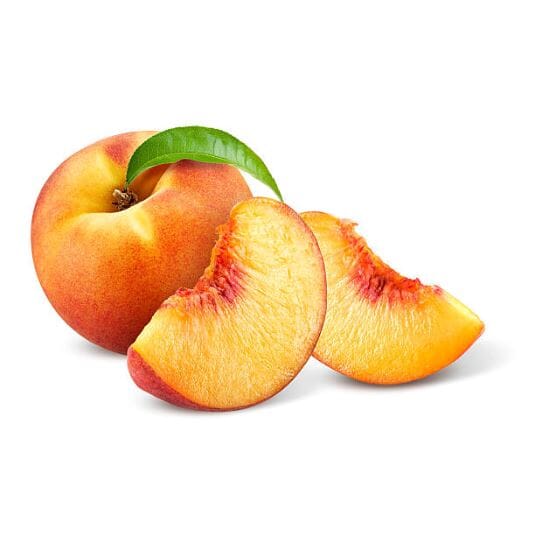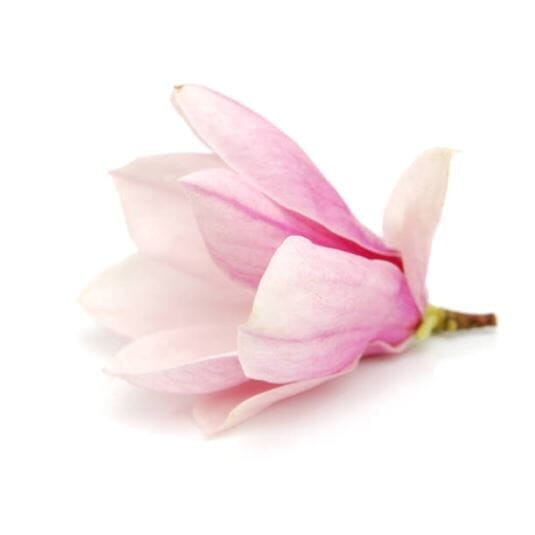What does the word basil mean?
Basil, also known as royal herb, belongs to the Lamiaceae family. Its name comes from the Greek word "basilikon phuton," meaning "royal plant." This aromatic plant is native to India and was introduced to Europe by the Greeks and Romans.
In the beginning…
Basil has a rich history dating back to ancient Egypt. The Egyptians used basil as a sacred plant and believed it had medicinal properties. In the Middle Ages, basil was considered a magical plant that warded off evil spirits and protected people from disease. In Europe, it was also used to perfume homes, clothing, and baths.
Today, basil is still used in traditional medicine for its antiseptic and anti-inflammatory properties. The growing popularity of basil perfume is a testament to the enduring appeal of this aromatic herb, which continues to inspire people in various fields.
Basil is native to India and Southwest Asia, where it has been cultivated for over 5,000 years. This aromatic plant was introduced to Europe by Alexander the Great when he conquered India in the 4th century BC. The Romans then brought basil to Italy, where it became a key ingredient in Italian cuisine.
Basil is now cultivated worldwide, primarily in warm, sunny regions. The most common varieties are sweet basil, large-leaf basil, and purple basil. Each variety has its own distinctive flavor, ranging from mild and subtle to strong and peppery. Basil perfume often uses its oils to create fresh, herbaceous notes.
Basil cultivation
Basil is an easy plant to grow, provided you provide it with the right growing conditions. It requires well-drained, nutrient-rich soil. Basil needs at least six hours of direct sunlight per day and should be watered regularly to keep the soil moist.
Basil seeds are best sown indoors in March or April, before transplanting them into pots or the garden after the last frost. Basil can also be grown from stem cuttings, which root easily in water or soil.
Basil is cultivated worldwide, but the main producing regions are Italy, the United States, Egypt, India, and Thailand. In Italy, basil is grown primarily in the regions of Genoa, Campania, and Calabria, where it is used to make pesto, a traditional Italian sauce. In the United States, basil production is concentrated in California and Florida, where it is grown in open fields and greenhouses for sale to supermarkets and restaurants.
In Egypt, basil is cultivated in the Fayoum region, where it is used as an ingredient in a traditional drink called "habak." In India, basil plantations are found in the states of Uttar Pradesh, Tamil Nadu, and Gujarat, where it is used in Indian cuisine and Ayurvedic medicine. It is also used in Thailand, in the famous dish "pad kra pao," which is made with minced meat, basil, chili peppers, and garlic.
Planting basil is a simple activity. First, it's important to choose a sunny location. The soil should be prepared by removing weeds and loosening it. Then, a hole suitable for the size of the basil root ball should be dug and the plant gently placed inside. The roots are then covered with soil and lightly tamped down.
After planting, basil goes through several stages of development . First, its seeds germinate and small green shoots emerge from the soil. These shoots then develop into green, aromatic leaves, forming a compact bush. As the plant grows, new stems and leaves continue to form. Basil can reach a height of about 30 to 60 centimeters, with branching stems and larger leaves. The plant also produces white or pink flowers in late summer, but it is recommended to remove these to encourage continued leaf growth. Basil can be harvested as needed by picking the leaves, promoting denser, bushier growth. With proper care, basil can continue to thrive and provide an abundance of fresh leaves.
Harvesting basil is a crucial step in producing quality basil perfumes. Basil leaves are harvested early in the morning when their oil content is highest. They are then steam distilled to extract the essential oils, which are used in the production of perfumes and other cosmetic products.
What did you know about basil in perfumery?
Basil can be processed into essential oil through steam distillation or solvent extraction. Steam distillation is the most common and environmentally friendly method. It produces a high-quality essential oil with a fresh, herbaceous scent characteristic of basil.
Basil is an aromatic plant that offers a fresh, herbaceous scent profile with slightly spicy and aniseed notes. Its distinctive and easily recognizable aroma makes it a popular ingredient in the perfume and cosmetics industries.
Making basil perfumes involves several steps, each of which is essential for achieving a high-quality product. First, basil essential oils are extracted from the plant's leaves. Then, they are blended with other raw materials, such as carrier oils or alcohols, to create the final perfume.
The blend is then left to mature for several weeks, allowing the various aromatic notes to blend and develop. Finally, the fragrance is filtered and bottled, ready for use. Basil fragrances can be used in a wide variety of products, such as eau de toilette, scented candles, or massage oils. Thanks to their fresh, herbaceous character, they are particularly popular during the summer months, where they offer a light and refreshing alternative to heavier fragrances.
Basil is a highly valued olfactory note in perfumery for its fresh, aniseed character. It is often used in unisex fragrances to bring a touch of freshness and naturalness. Basil perfume can be combined with other olfactory notes such as mint, rosemary, or bergamot to create fresh and revitalizing scents. It can also be combined with warmer, spicier notes such as vanilla or pepper to create more sophisticated fragrances.
In perfumery, basil blends perfectly with other olfactory notes such as mint, rosemary, bergamot, lemon, and verbena. Together, these notes create fresh and revitalizing scents. It can also be combined with warmer, spicier notes such as black pepper or vanilla to create sophisticated and captivating fragrances. Basil perfume pairs particularly well with woody and musky notes to bring a touch of freshness and naturalness.
GOOD TO KNOW!
In addition to its use in perfumery, basil also has numerous virtues and health benefits. It is particularly recognized for its anti-inflammatory, antioxidant, and antiseptic properties. Basil essential oils can be used to relieve pain and inflammation, as well as stimulate blood circulation and improve digestion.
Basil is also known for its relaxing and soothing properties, making it an ideal ingredient for infusions and herbal teas. It is particularly recommended for combating stress, anxiety, and sleep disorders. Finally, basil is rich in vitamins and minerals, making it an ideal ingredient for strengthening the body and preventing disease.
Basil flavors known…
• A Jo Malone fragrance that highlights basil notes is "Lime Basil & Mandarin." This signature scent offers a refreshing and vibrant blend of fresh basil, zesty lime, and juicy mandarin. The combination of aromatic basil and citrus creates a dynamic and invigorating fragrance, perfect for lovers of fresh, citrusy scents.
• Azzaro pour Homme by Azzaro : Azzaro pour Homme is an iconic fragrance from the house of Azzaro. Launched in 1978, it has become a timeless classic in men's perfumery. This woody aromatic fragrance uses basil as one of its key notes. Basil brings a herbaceous and invigorating freshness to the composition, complemented by notes of lavender, bergamot, geranium, and oakmoss. Azzaro pour Homme is appreciated for its refined, elegant, and masculine character.
• L'eau d'Hadrien by Goutal : L'eau d'Hadrien is an iconic creation from the Goutal perfume house. Launched in 1981, this unisex fragrance is inspired by the story of the Roman Emperor Hadrian and the gardens of the villa he owned in Tuscany. L'eau d'Hadrien is a fresh and invigorating composition that incorporates basil among its key ingredients. The basil used here is combined with citrus notes, including lemon and grapefruit, as well as touches of cypress and vetiver. This combination offers a unique sensation of Mediterranean freshness.
• Chrome by Azzaro : Chrome is a men's fragrance launched by Azzaro in 1996. It is known for its fresh and energetic character, perfect for modern and dynamic men. Although basil is not one of the main notes of Chrome, it is used subtly in the composition to add a green and aromatic nuance. Basil blends with notes of citrus, rosemary, musk and precious woods to create an invigorating and invigorating fragrance.
• Purple Basil Water by Hermès : Purple Basil Water is a creation of the luxury house of Hermès. This fragrance is part of the Hermessence collection, which is characterized by minimalist and refined olfactory compositions. Purple Basil Water features purple basil, a variety of basil with an intense and spicy scent. This top note is accompanied by accents of mint, verbena, black pepper, and subtle woody notes. Purple Basil Water is a unisex fragrance that embodies the elegance and freshness of nature.
These basil fragrances stand out for their freshness and lightness, and are suitable for both summer and winter. They are perfect for those looking for original and refreshing fragrances, ready to explore bold new olfactory experiences.
Bon Parfumeur Basil Perfumes
Bon Parfumeur offers several eau de parfums and home fragrances based on basil. Among them, you will find:

• Candle and diffuser 01 : These two products combine notes of basil with fig leaf and mint, providing a fresh and aromatic ambiance.
• Eau de Parfum 701 : A fragrance from the Bon Parfumeur brand that combines eucalyptus with notes of coriander and cypress, creating a fresh and herbal composition.
• Eau de Parfum 702 : This fragrance blends notes of incense with lavender and cashmere wood, offering a sensation that is both mysterious and soothing.
• Eau de Parfum 902 : This fragrance opens with fresh, zesty notes of Orange, Basil, and Ginger. Then, the spicy duo of cinnamon and clove intoxicates us. Scents of tobacco leaves and Armagnac emanate from the fragrance, revealing a bold and rich trail.
• Afterhomework Eau de Parfum : a striking olfactory immersion. Fresh, strongly spicy and intensely woody, it recalls tobacco and iced vodka. Burning freshness between juniper berry, cinnamon and patchouli, a perfume with a captivating scent.
Our brand offers sustainable, unisex products, featuring a variety of fragrances combining fresh and aromatic notes, reminiscent of the essence of basil. These olfactory creations are ideal for those seeking original, high-quality perfumes. For more information, please visit our website or visit us in-store.










